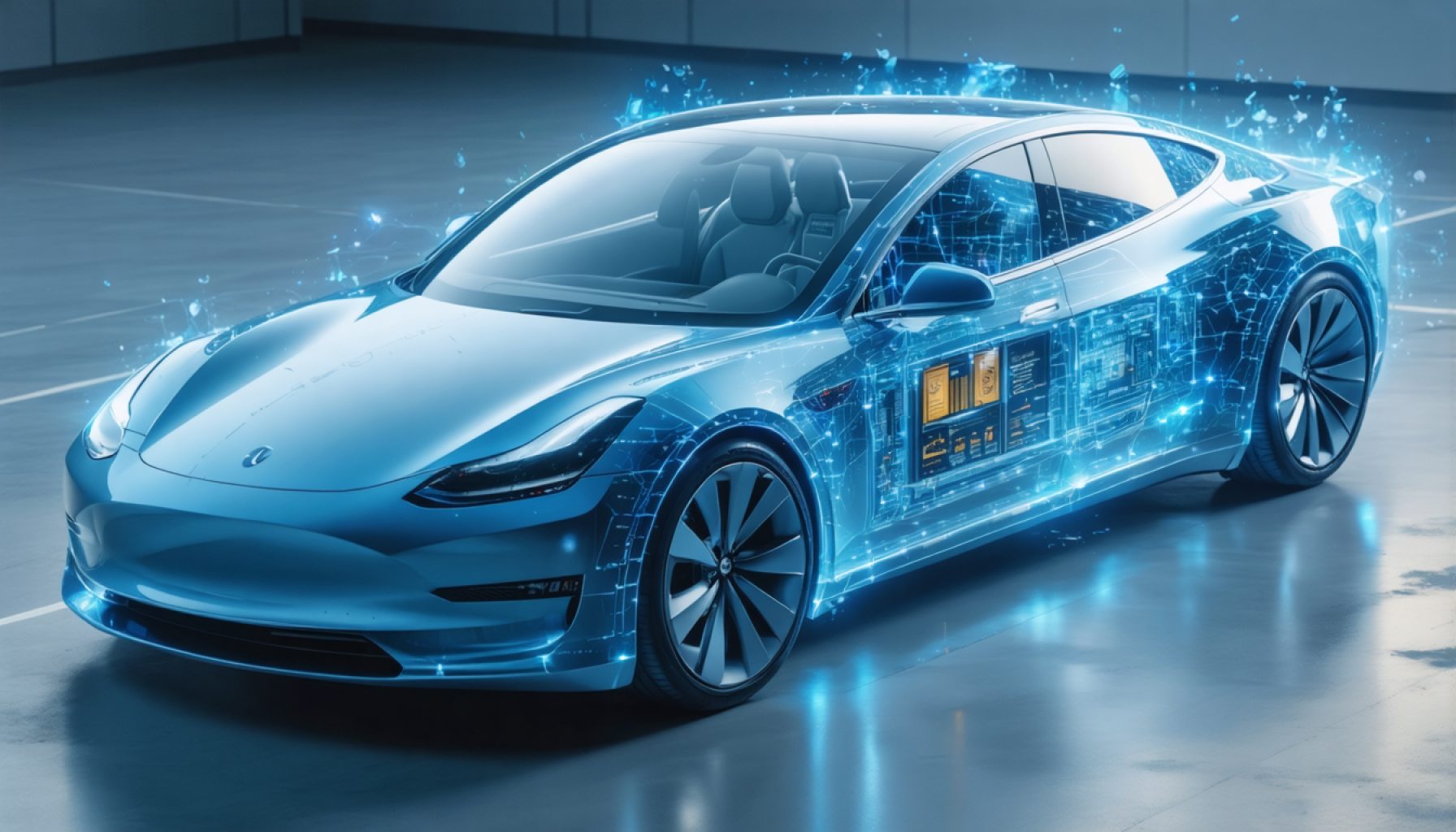- Japan is pioneering a new cathode material for all-solid-state fluoride-ion batteries (FIBs), revolutionizing electric vehicles (EVs).
- The innovation utilizes copper nitride super-ceramics, far surpassing traditional lithium-ion batteries in capacity, reaching approximately 550 mAh/g.
- A unique redox mechanism involving copper and nitrogen enables efficient electron release and fluoride ion accommodation.
- Advanced X-ray techniques reveal significant molecular changes contributing to the battery’s enhanced performance.
- Major Japanese collaborations, including Toyota and the University of Tokyo, aim to launch this technology by 2035.
- This advancement is set to double EV range, driving towards a more sustainable and energy-dense automotive future.
A quiet revolution unfolds in the labs of Japan, as a groundbreaking material takes center stage in the quest for longer-lasting, safer electric batteries. Imagine a future where your electric car travels not just a mere 600 kilometers on a single charge but effortlessly cruises past the 1,200-kilometer mark. This is the potential impact of a new cathode material developed for all-solid-state fluoride-ion batteries (FIBs).
At its core, this innovation harnesses a super-ceramic made from copper nitride, stepping beyond the traditional confines of lithium-ion technology. This new material stands as a titan, boasting a reversible capacity of approximately 550 mAh/g, a stark contrast to the modest 120–250 mAh/g typical of its lithium cousins. It tells a story of ambition, where each nitrogen atom becomes an electric powerhouse, releasing up to three electrons—an exceptional feat.
This cathode’s brilliance lies in a secret dance of copper and nitrogen, coordinating in an elegant redox mechanism. Here, molecular nitrogen forms during charging, creating unique vacancies that welcome an abundance of fluoride ions. This detail, significant yet invisible to the naked eye, unfolds under the penetrating gaze of advanced synchrotron-based X-ray techniques.
With collaborations spanning the giants of Japanese industry and academia, including Toyota and the University of Tokyo, there’s an air of collective anticipation. While the practical applications may debut around 2035, the road is set. A world where EVs effortlessly glide for kilometers with unparalleled energy density beckons, fueled by this innovative leap in battery technology.
The lesson here is plain and promising: the path to a sustainable automotive future glows brighter as innovation reshapes possibilities.
Discover the Next Leap in Battery Technology: How Super-Ceramics Could Revolutionize EV Range
Features, Specs & Pricing
All-Solid-State Fluoride-Ion Batteries (FIBs): The heart of these advanced batteries is the newly developed cathode material made from copper nitride. Here are some key features:
– Reversible Capacity: Approximately 550 mAh/g, which is significantly higher than the 120–250 mAh/g range of typical lithium-ion batteries.
– Material Composition: Utilizes a super-ceramic copper nitride matrix that offers enhanced energy storage options through its efficient redox mechanism.
– Electron Efficiency: Each nitrogen atom can release up to three electrons, contributing to the high capacity.
Pricing details for these batteries remain speculative as they are not yet commercially available. However, given the advanced materials and processes involved, initial costs may be higher than current lithium-ion batteries.
How-To Steps & Life Hacks
Extending Battery Life in EVs:
1. Optimize Charging Habits: Try to maintain the battery charge between 20% and 80% to extend battery life, similar to best practices for lithium-ion batteries.
2. Regular Software Updates: Enable automatic updates in your EV to ensure you’re benefiting from the latest efficiency tweaks.
3. Temperature Management: Park in shaded or climate-controlled environments to minimize battery temperature extremes.
4. Moderate Driving Habits: Rapid acceleration and high speeds can reduce range, so a steady pace may help extend travel distance.
Real-World Use Cases
Potential Applications:
– Extended EV Range: The projected range of over 1,200 kilometers per charge opens new possibilities for long-haul travel and reduces range anxiety.
– Grid Storage Solutions: With higher capacity, these batteries could offer more efficient energy storage for renewable sources.
– Consumer Electronics: Adaptation of this technology in gadgets could lead to less frequent charging cycles and longer-lasting devices.
Market Forecasts & Industry Trends
Industry experts anticipate that as solid-state battery technologies mature, they could see adoption in EVs and consumer electronics by the mid-2030s. This timeline aligns with the anticipated rollout of commercial applications. A study by the IEA indicates that the global electric vehicle stock could reach 145 million by 2030, suggesting a strong market for improved battery technologies.
Security & Sustainability
The new FIBs introduce several potential security and sustainability advancements:
– Safety: All-solid-state designs reduce flammability risks compared to liquid electrolytes in lithium-ion batteries.
– Environmental Impact: Copper nitride is less resource-intensive to mine and process than some lithium compounds, potentially leading to a lower environmental footprint.
Pros & Cons Overview
Pros:
– High energy density, promising substantial increases in EV range.
– Reduced risk of combustion due to all-solid-state construction.
– Potentially lower environmental impact.
Cons:
– Likely higher production costs initially.
– Technological maturity remains a barrier until around 2035.
– Compatibility with existing EV architectures may require adaptation.
Tutorials & Compatibility
Compatibility Concerns:
To leverage new FIBs in existing EV models, car manufacturers may need to develop adaptations in power management systems and battery packs. Technological integration into current EV platforms may also call for software updates to fully exploit the high energy density benefits.
Actionable Recommendations
– Stay Informed: Keep an eye on industry announcements regarding breakthroughs in battery technologies.
– Explore Alternatives: As FIBs mature, compare their capabilities with contemporaneous battery technologies like lithium-sulfur or graphene-enhanced variants to find the best fit for your needs.
– Economic Assessment: Anticipate and plan for the potential initially higher investment but weigh this against long-term energy savings.
For further insights into cutting-edge automotive and energy storage technologies, visit Japan Times and MIT Technology Review.














